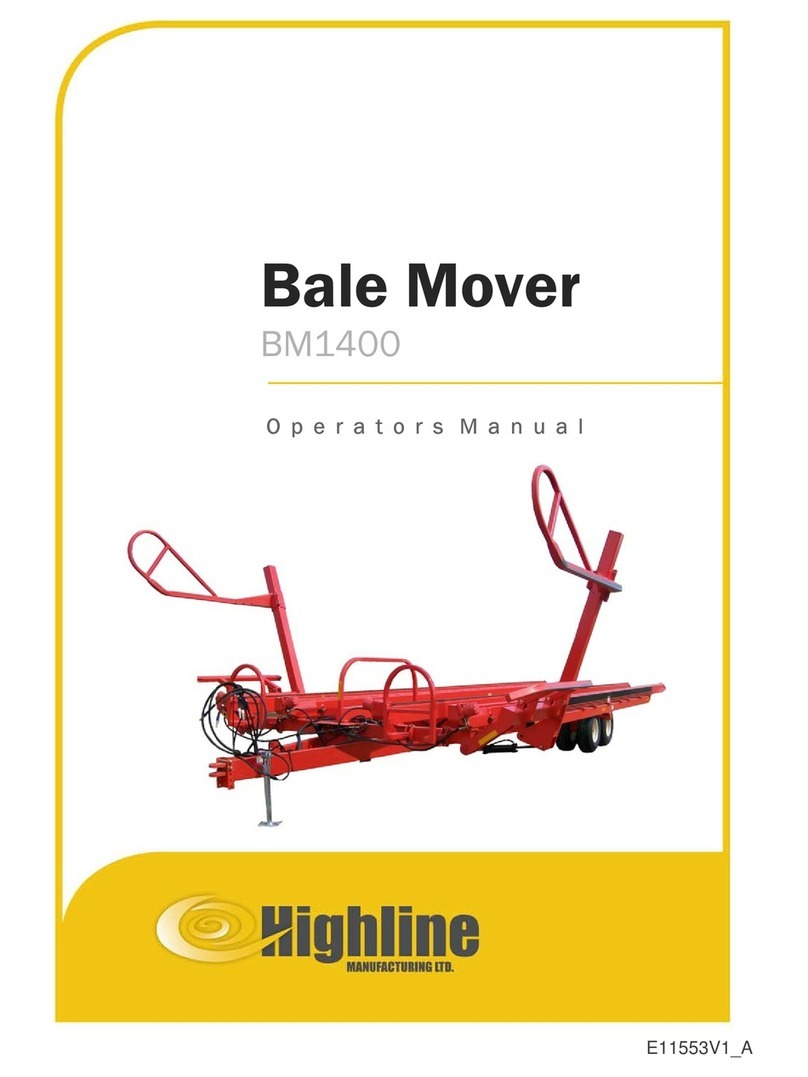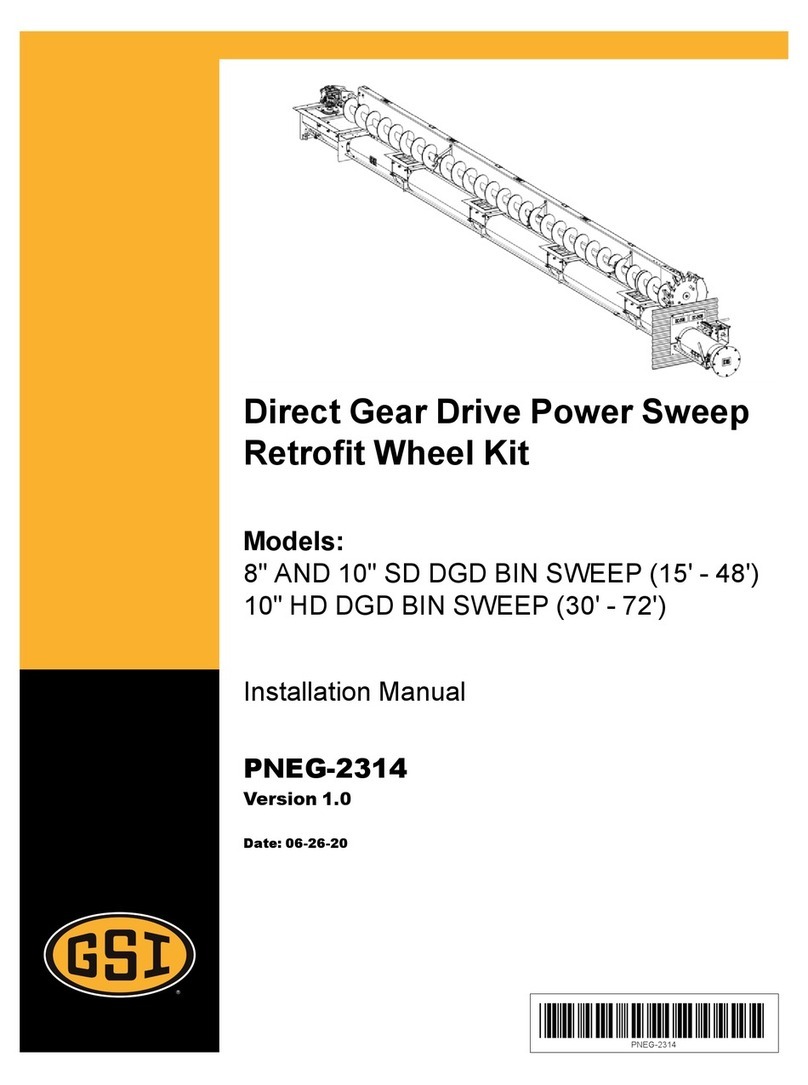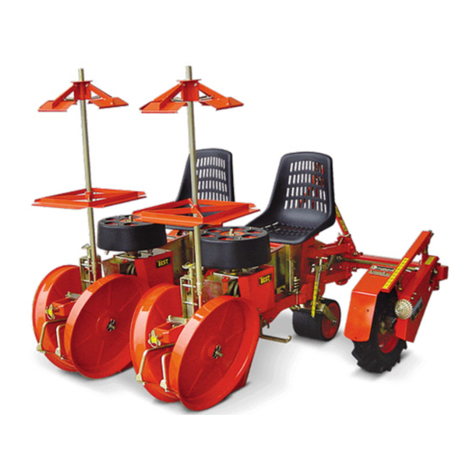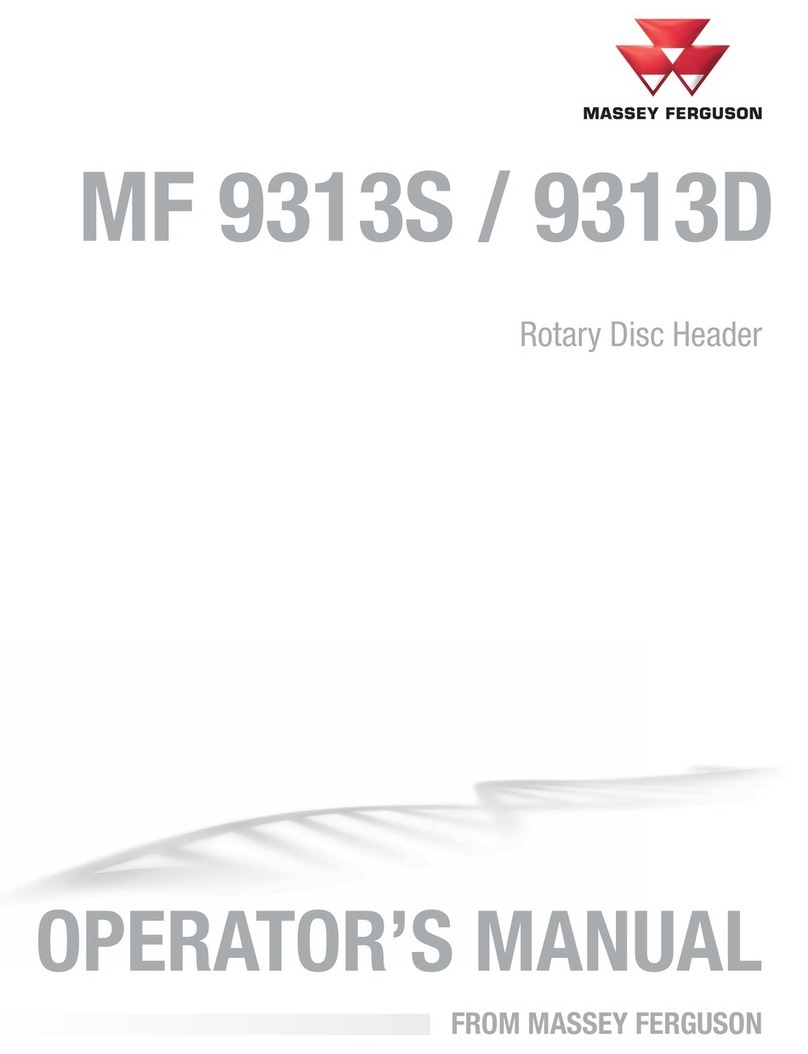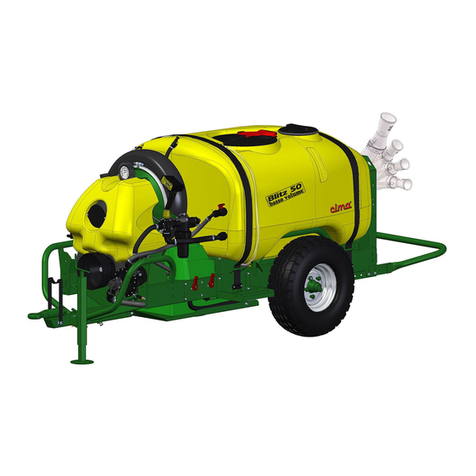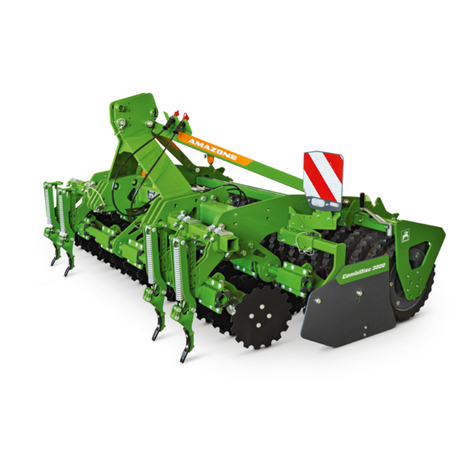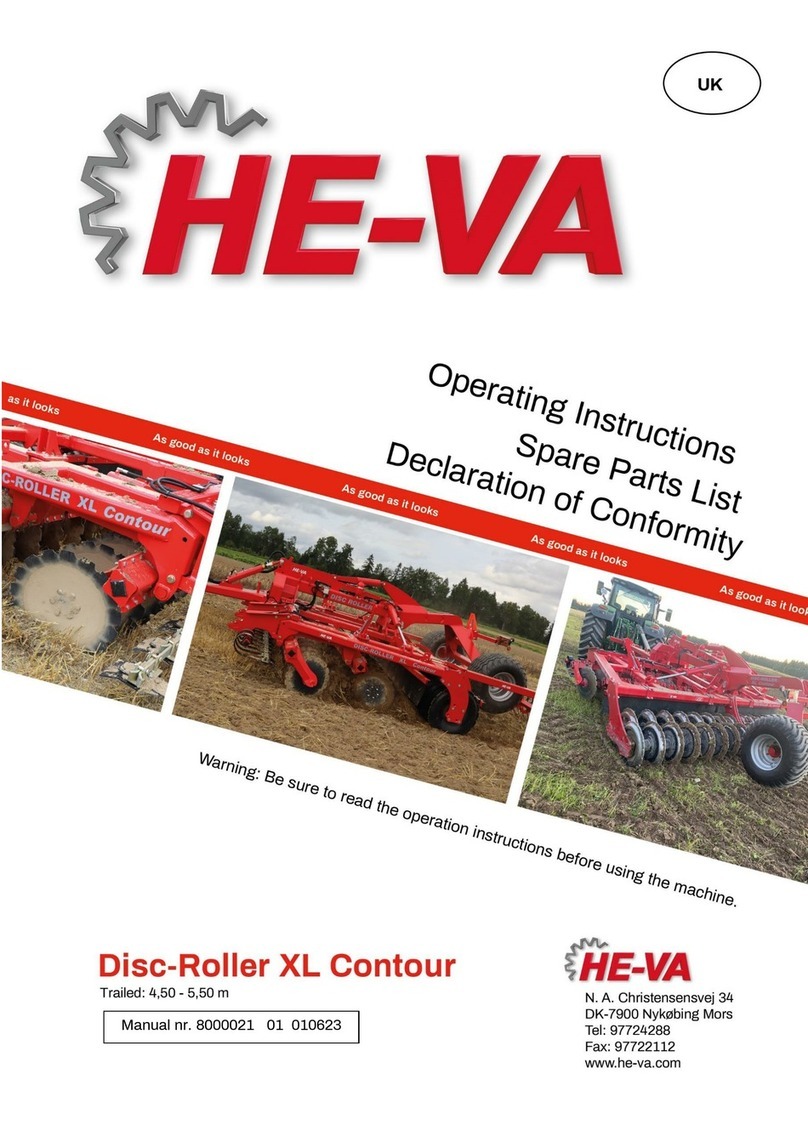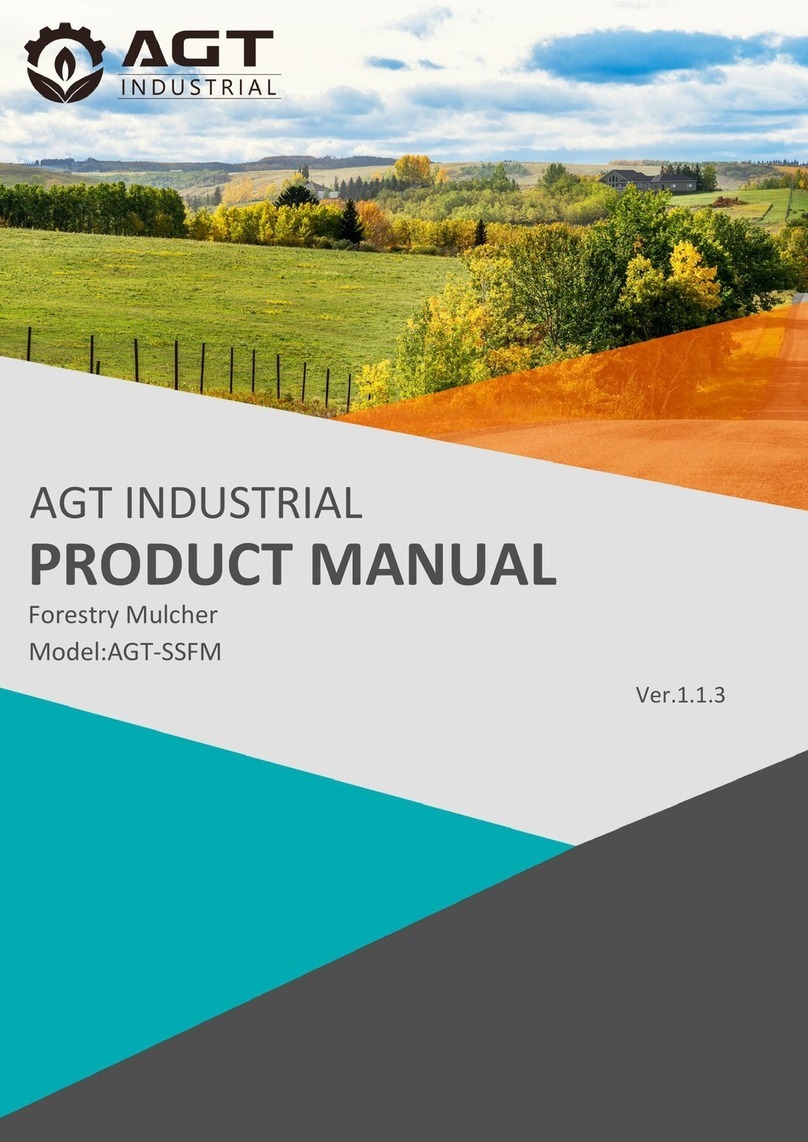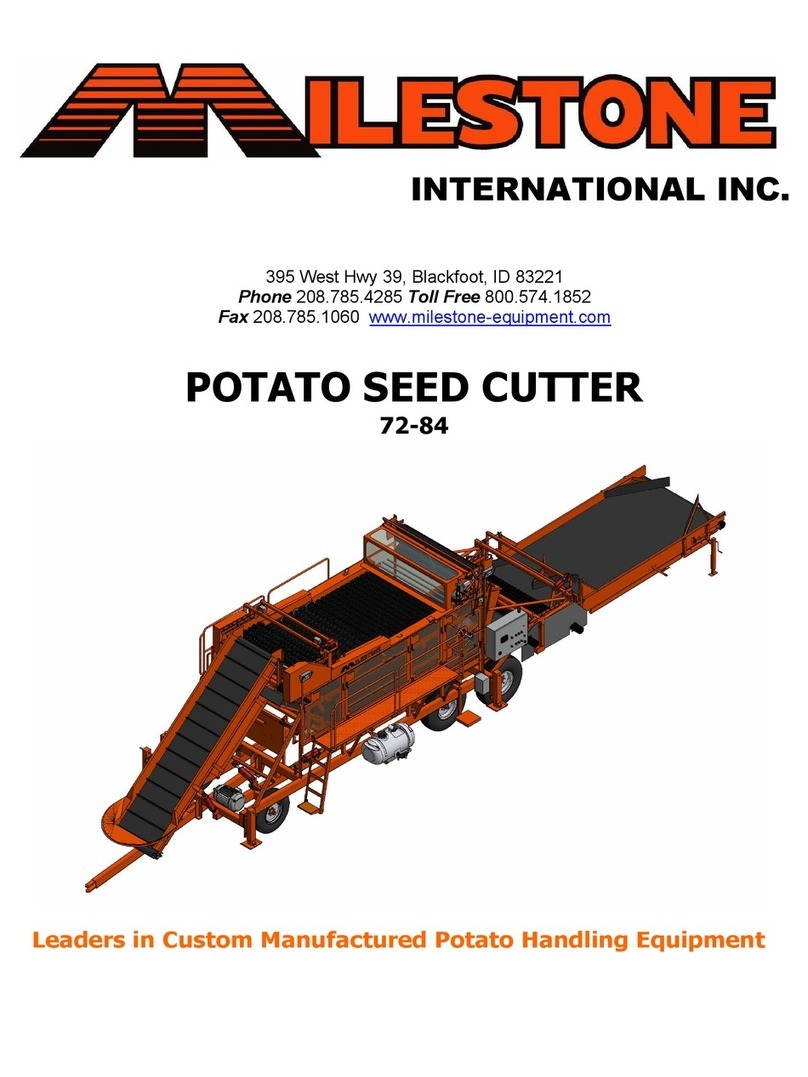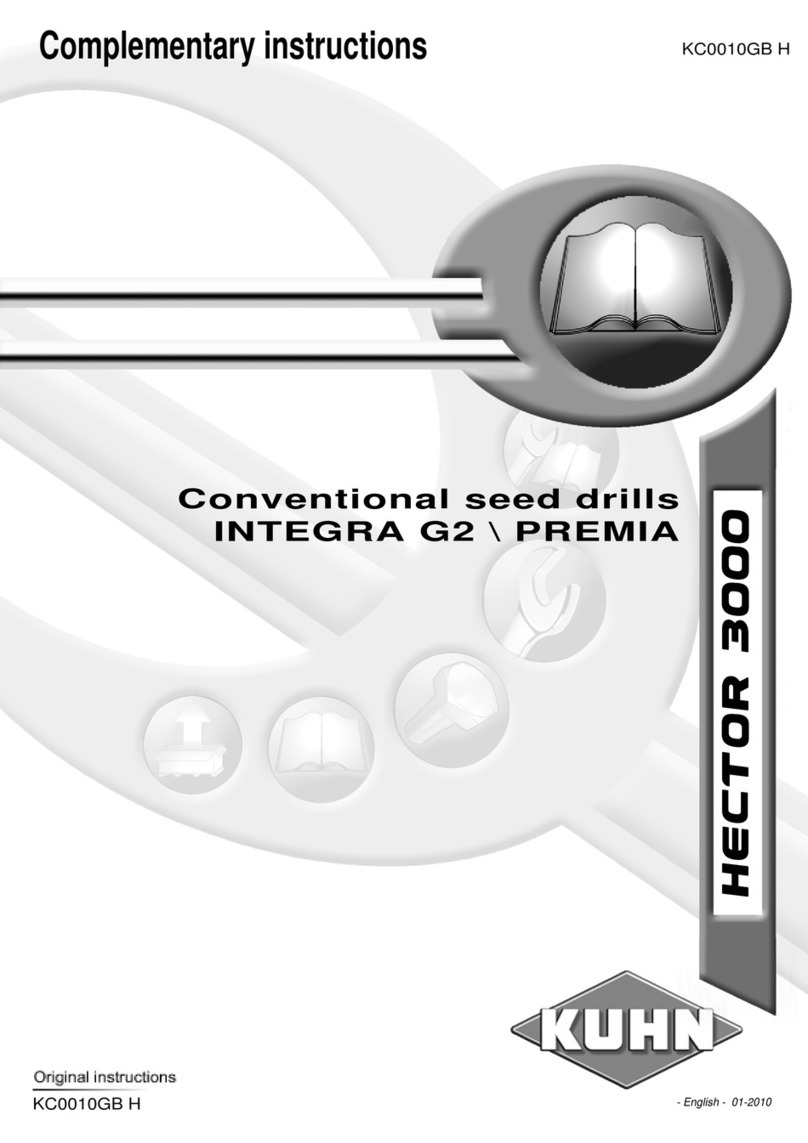Sisis SVR Deep Cleaner User manual

SVR DEEP CLEANER
INSTRUCTION MANUAL

2
CONTENTS
1. Important Safety Introductions 2
2. General Information 3
2.1. Introduction 3
2.2. Notice Of Copyrights And Property Rights 3
2.3. Notes For The Operator 3
2.4. Training And Instruction Assistance 3
2.5. Training Topic Examples 4
3. Safety 6
3.1. General 6
3.2. Notes Concerning Signs And Symbols 6
3.3. Proper Intended Use 6
3.4. Reasonably Foreseeable Misuses 7
3.5. Residual Risk 7
3.6. Description Of The Safety Equipment 7
3.7. Markings And Signs On The Svr Deep Cleaner 8
3.8. Operating Personnel / User Groups 8
3.9. Safety Instructions For Operating Personnel 9
3.10. SafetyInstructionsForMaintenanceAndFaultRecticationOnTheSvrDeepCleaner 9
3.11. Notes Pertaining To Special Category Hazards 9
4. Product Description 10
4.1. Functioning 10
4.2. Technical Data 10
5. Transport And Assembly 13
5.1. Transport 13
5.2. Assembly 13
5.3. Commissioning 13
6. Operations And Controls 14
6.1. General Instructions 14
6.2. Operation 14
7. Service 16
7.1. Care 16
7.2. Maintenance 16
7.3. Maintenance Work 17
7.4. Repair 18
8. Disposal 19
8.1. Environmental Protection 19
8.2. Oil And Waste Contaminated With Oil, Lubrication Greases 19
8.3. Plastics 19
8.4. Metals 19
8.5. Final Decommissioning 19
9. Spare Parts 20
10. CerticateOfConformity 35
11. Serial Numbers 35
1. IMPORTANT SAFETY INTRODUCTIONS
CAUTION:- READ THE INSTRUCTIONS. We want you to obtain the best performance from this
machine.Ifyouhaveanydicultyincarryingoutthefollowinginstructionspleasecontact
your local SISIS dealer.
NEVER
• Carry out adjustments whilst the machine is running.
• Allow any unauthorised person to handle machines in any way at any time.
ALWAYS
• Read the operating instructions carefully and understand the controls before commencing work.
• Use safety guards and make sure they are correctly in position. They are supplied for your protection.
• Before starting work always visually check machine for damage or wear to parts.
• Look behind before starting to reverse and watch out for children or pedestrians.
• Respect powered machines. Always keep hands and feet clear of moving parts and remember that brushes and rollers can continue to
rotateevenafterthepowerunitisswitchedo.
• Switchothepowerbeforemakingadjustmentsorrepairsandneverliftorcarryamachinewhilstanypartsaremoving.
EYE PROTECTION
Indry,dustyorwindyconditionsitmaybenecessarytoweareyeprotectiontoprotectyoureyesfromyingdebris.

3
2. GENERAL INFORMATION
2.1. Introduction
This operating manual is an essential tool to ensure the proper and safe operation of the SVR Deep Cleaner.
Thisusermanualcontainsimportantinformationregardingthesafe,properandecientoperationoftheSVRDeepCleaner.Adherence
to this manual will help to avoid risk, lower repair costs and reduce downtimes while simultaneously increasing the service life of the SVR
Deep Cleaner itself.
The operating manual must always be available and every person tasked with working on or with the SVR Deep Cleaner must read and
follow the instructions. These include, among other things
– operationandrecticationofmalfunctionsduringoperation
– servicing (care, maintenance, repairs) and/or
– transport.
2.2. Notice of copyrights and property rights
● Keepthisoperatingmanualcondential.
●Only make this operating manual accessible to authorized persons.
●Only pass this operating manual to third parties after obtaining written permission from SISIS.
●All documents are protected under the Copyright Act. Passing on and reproducing documents, including excerpts, and
exploiting and sharing the contents of documents is prohibited unless expressly approved in writing.
●Violations are punishable and subject to compensation of damages. SISIS reserves the right to exercise any and all
industrial property rights.
2.3. Notes for the operator
The operating instructions are an essential component of the SVR Deep Cleaner.
●Make sure the operating personnel read this operating manual.
●Supplement the operating manual with operating instructions based on national accident prevention regulations and
environmental protection regulations including information about oversight obligations and obligations to report to take
unique operational characteristics regarding work organization, work processes and/or deployed personnel into account.
●In addition to the accident prevention provisions in the country of operation, on-site and contained herein, recognized
technical regulations for safe and proper operations also apply.
● DonotmakeanymodicationsoralterationstoorinstallattachmentsontheSVRDeepCleanerthatmightnegatively
impact safety without approval from SISIS. This applies, in particular, to the installation and calibration of safety devices and
safety valves, as well as for welding load-bearing components.
● ReplacementpartsmustcomplywiththetechnicalrequirementsdenedbySISIS.Thisisalwaysensuredifyouuseoriginal
replacement parts.
● Assignonlytrainedorinstructedstatooperate,service,maintainandtransporttheSVRDeepCleaner.
● Clearlydenepersonnelresponsibilitiesforoperation,servicingandmaintenance.
2.4. Training and instruction assistance
●As the company owner/operator, inform and instruct the operating personnel about existing legal and accident prevention
regulations and about existing safety equipment on the SVR Deep Cleaner. This obligation also extends to safety equipment
installedaroundtheSVRDeepCleaner.Takethevarioustechnicalqualicationsofthestaintoaccount.
●Make sure the operating personnel has understood the training and make sure they comply with the training. This is the
only way to ensure your personnel will work in a safe manner and be aware of the risks.
●Regularly check that personnel are complying with the training.
● Asacompanyowner/operator,haveeachstamemberconrmtheyhaveparticipatedintraininginwriting.
Onthefollowingpages,youwillndexamplesoftrainingtopicsandaformwhichcanbecopiedasatemplatefortheconrmationof
participation in the training/instruction.

4
2.5. Training topic examples
1. Regarding safety
Accident prevention regulations
General legal regulations
General safety instructions
Measures in the event of an emergency
Safety instructions for the operation of the SVR Deep Cleaner
Working with the safety equipment on the SVR Deep Cleaner
Safety equipment in the vicinity of the SVR Deep Cleaner
Meaning of symbols and signs
2. Regarding the operation of the SVR Deep Cleaner
Working with the operating elements on the SVR Deep Cleaner
Explanation of the operating manual for the operating personnel
Special experiences of the operator when working with the SVR Deep Cleaner
Rectifying operating malfunctions
3. Regarding servicing and maintenance regulations
Proper handling of cleaning agents, lubricants
Specialexperiencesoftheoperatorintheeldsofmaintenance,servicing,cleaningandcareoftheSVRDeep
Cleaner

5
Conrmationoftraining
Training topic:
Date: Name of trainer: Instructor’s signature:
No. Lastname,rstname Signature
1
2
3
4
5
6
7
8
9
10
11
12
13
14
15
16
Table of contents
Popular Farm Equipment manuals by other brands
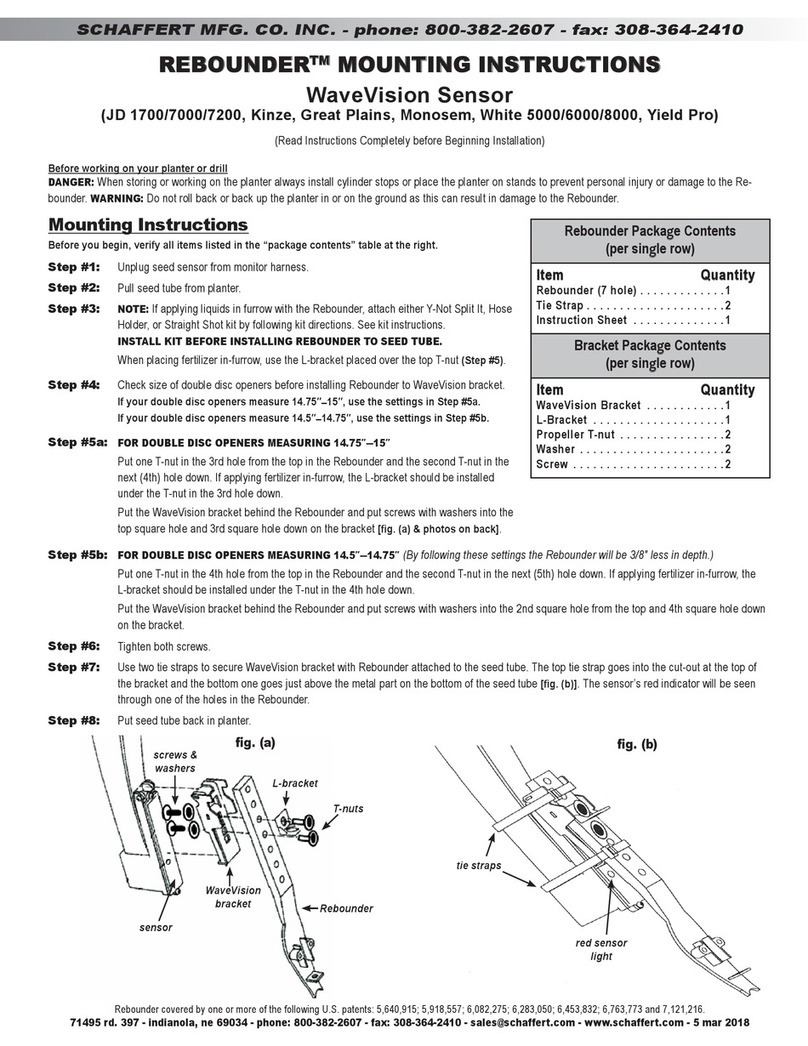
Schaffert
Schaffert Rebounder Mounting instructions

Stocks AG
Stocks AG Fan Jet Pro Plus 65 Original Operating Manual and parts list
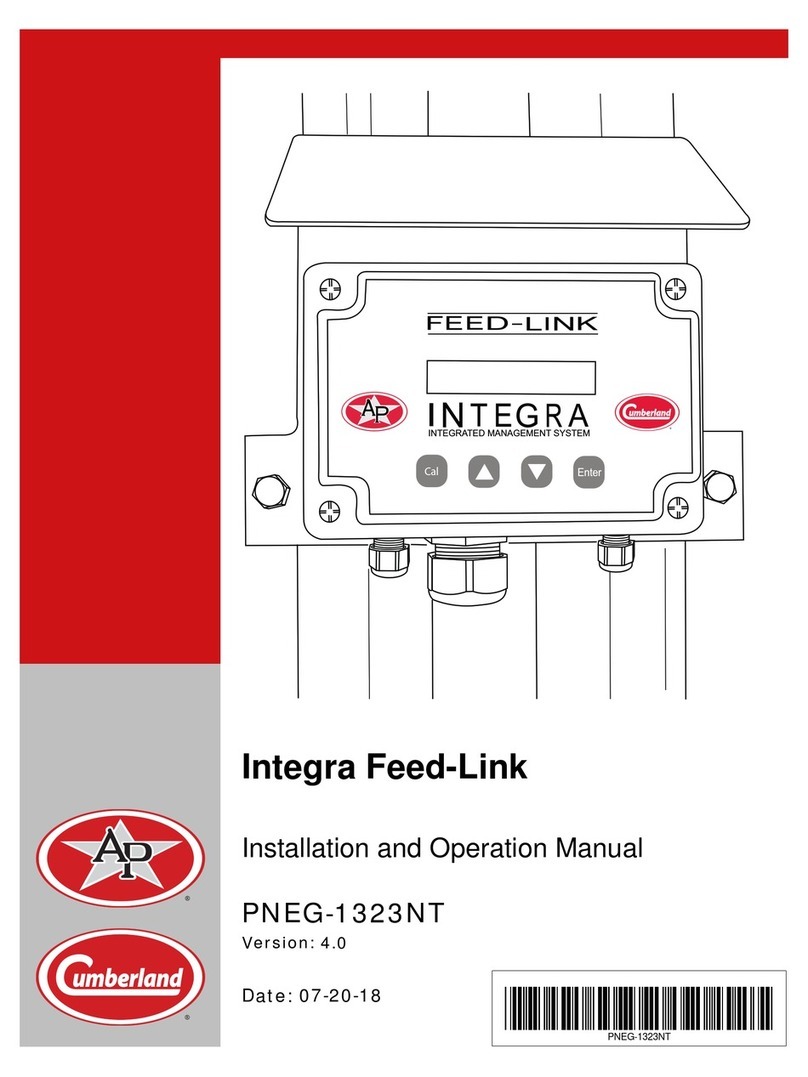
Cumberland
Cumberland Integra Feed-Link Installation and operation manual
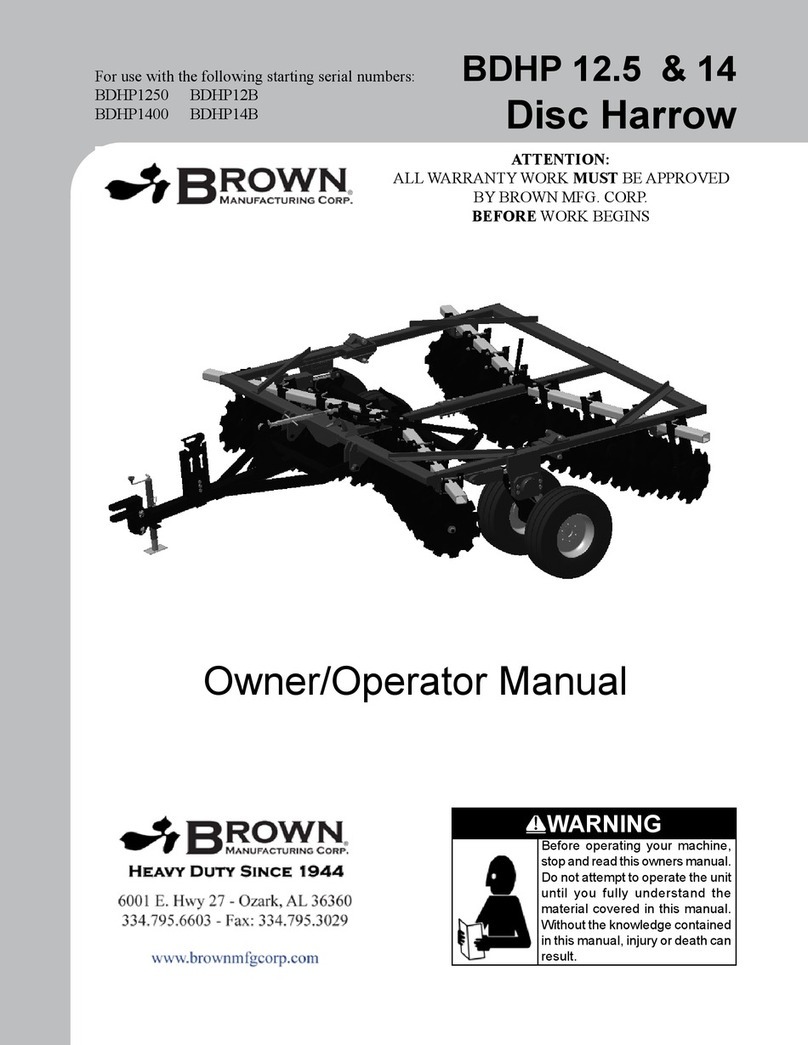
BROWN
BROWN BDHP-1250 Owner's/operator's manual
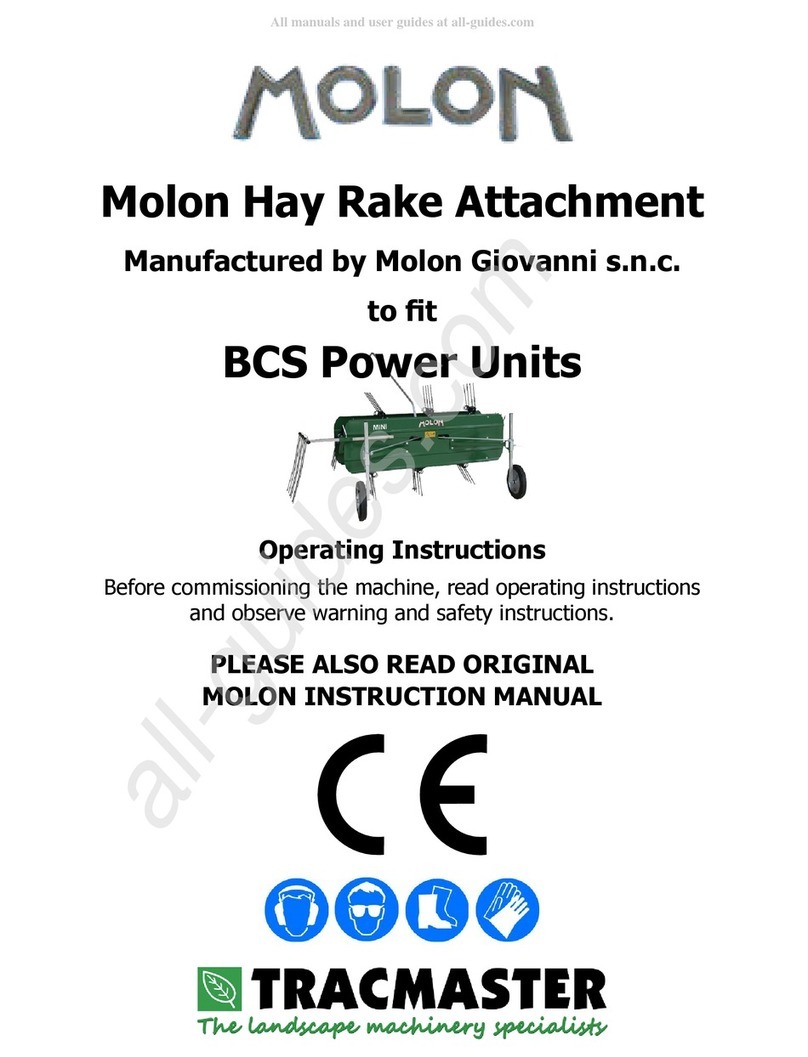
Molon
Molon BCS operating instructions
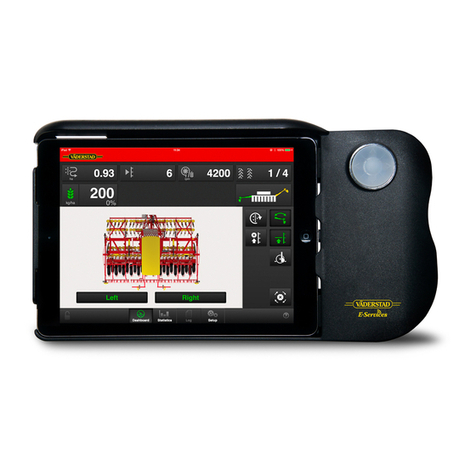
Vaderstad
Vaderstad Rapid Series instructions
